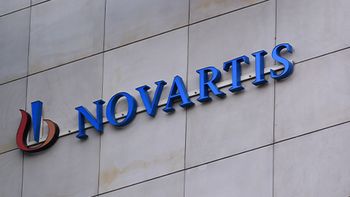
Shedding Light on Global Pharmaceutical Supply Chains
Increase in new treatments also brings increase in logistical challenges for pharma.
Suppliers across the healthcare and life sciences industries are facing a monumental challenge. While patients have benefited greatly from a dramatic increase in new medications and treatment options, pharmaceutical supply chains are trying to catch up to new customer and patient expectations.
In order to better understand these challenges,
We have distilled this research down into clear steps for pharmaceutical executives to face these challenges head-on. By harnessing greater visibility and smarter paths to patient communities, the pharmaceutical industry can make a successful jump from the traditional just-in-time (JIT) model to a supply chain defined by efficiency, agility, and resilience.
Visibility: Confidence in what you see
While shippers in other industries might be most concerned about on-time delivery, the pharmaceutical industry’s focus is squarely on real-time “environmentals” that are critical to maintaining the viability of many products—factors such as temperature, humidity, and/or light. Indeed, of the pharmaceutical executives surveyed, nearly one-third identified product protection as a top demanding storage and transportation challenge—with security and temperature being of greatest concern.
These attitudes reflect ongoing, industry-wide stress around the cold chain, where failure can be catastrophic. In fact, the World Health Organization reports that more than half of vaccines are wasted worldwide, and the United Nations estimates that smarter cold-chain management strategies could have saved around one billion COVID-19 vaccines. According to Supply Chain Dive, vaccine losses due to temperature excursions cost around $34.1 billion annually in lost product cost, replacement cost, and wasted logistics investments.
The critical nature and financial value of pharmaceutical products justify significant visibility investments. Raw material and active pharmaceutical ingredient (API) availability should be a focus, to ensure materials are consistently available to avoid disruptions. Tracking product quantities, both in the warehouse and on the move, helps companies avoid overstocking specific time-sensitive drugs—thereby optimizing stock and availability, minimizing waste.
The internet of things (IoT) sensor technology can monitor temperatures from the warehouse all the way to the patient. These sensors alert shippers when temperatures fall outside the ideal range, helping them determine if the product can be released to the pharmacy, hospital system, or government agency, or if quarantine and destruction are necessary.
Altogether, the healthcare industry must work toward creating a “cognitive supply chain” to fill these gaps. Real-time supply chain visibility, paired with machine learning and artificial intelligence capabilities, gives companies better clarity of vaccines and other medicines when in transit, and the ability to mitigate issues as they arise or even predict and prevent them entirely.
Security: Work smarter, not harder
While temperature is a critical factor within the pharmaceutical supply chain, shipment security is another top concern. And it’s not new, either, especially for shippers operating in the US, which is one of the top three countries for pharmaceutical cargo theft. When theft does occur—often a facility break-in or an entire truckload being stolen—the losses can be staggering. The average value of pharmaceutical theft reaches into the six figures, with even the smaller thefts providing a sobering contrast to other industries. In 2020, one theft alone resulted in the loss of $1.2 million in oncology drugs.
As a result, pharmaceutical companies have made weighty investments in security for many years. In fact, 96% of the surveyed pharmaceutical executives pinpointed security reports as their main method to promote product retention—outranking both temperature and regulatory reporting. Organizations also use physical security practices as guardrails, including hiring third-party security services, deploying decoy shipments, and even banning vehicle stops within the first and last 250 miles of a shipment, where the risk for theft is greatest.
However, pharmaceutical executives concerned about product loss should also consider newer, smarter solutions. As a complement to physical security, IoT-based sensor tracking enables real-time data and alerts to provide greater insight into product security and status. With around-the-clock physical location tracking of every shipment, shippers can receive alerts when a truck stops or goes off its prescribed route and can pinpoint the truck’s diverted location. Some security offerings also define locations where theft is most likely to occur—including those first and last miles—and can alert manufacturers when a load is approaching a high-risk zone.
This combination of physical and smart solutions can strengthen a pharmaceutical company’s chain of command and control—thereby saving millions of dollars and ensuring life-saving medicines arrive at their intended destinations.
Transparency: Communication Is key
Pharmaceutical companies face several other inbound and outbound challenges, including estimated times of arrival (ETAs) and yard management. Here again, visibility and security are key, and so is multi-party transparency. Having an open view across the lifetime of a shipment—any mode, anytime, anywhere—can capture efficiencies as well as counter the bullwhip effect.
A major barrier to effective supply chain transparency is poor communication. Historically, the logistics industry was decentralized, leading many organizations to develop proprietary workflows, processes, and systems that remain to this day largely unknown and unintelligible to those outside the organization or department.
To resolve this, pharmaceutical companies must implement dedicated, shared systems to efficiently communicate across their supply chain network. For example, notifications and messaging embedded within smart systems can significantly reduce the number of phone calls and emails employees must make. Data is also vital to any effective supply chain collaboration, as good data is the foundation of strong decision-making. With all that is at stake for the industry, pharmaceutical executives who wish to see their companies thrive can no longer rely on educated guesses.
This “control tower” approach—stitching together complex and siloed elements of the supply chain so organizations have greater visibility and better insights to help them run more efficient operations—is the future of supply chain management.
Agility: Expecting the unexpected
In addition to visibility, security, and transparency, what sets leading supply chains apart from their competitors? The answer is agility. Supply chain disruptions are a given—a daily occurrence—and thecompanies with the tools to understand their causes and effects will be able to make the most effective and rapid decisions.
Here, again, good data is paramount. Supply chain speed and flexibility are only possible with strong data at every point along the chain. Visibility solutions must be capable of on-the-fly adjustments to protect demanding and evolving requirements impacted by temperatures, weather, and other outside elements.
The smartest systems employ machine learning, acting as an augmentation to human knowledge. Based on solid data, the right models can help executives dramatically improve their ability to make decisions around the best appointment windows, carriers, routes, times to reach a facility, and more—ensuring optimum utilization of resources across the entire supply chain.
Thankfully, 68% of pharmaceutical supply chain organizations are already using serialization tracking technology to make agility gains. But there is still work to be done. Paired with visibility and data-driven communication, agile solutions can help the industry make a significant impact on the quantity and speed of pharmaceutical deliveries—saving money, time, and human lives.
Conclusion
In the face of mounting supply chain challenges, pharmaceutical companies are expected to double down on artificial intelligence, advanced analytics, and various other digital technologies. Industry leaders understand the critical need to maintain a clean, secure chain of custody for medical goods as they travel from the raw material providers, through distribution, and all the way to the end customer—and that any risk for contamination, exposure, theft, or other disruption has strong mitigation processes and contingencies in place.
While major progress is being made, much work is yet to be done. The report predicts that, through 2023, less than 5% of control-tower-like deployments will fulfill their end-to-end potential. To realize the promise of end-to-end visibility and control over the industry’s incredibly complex supply chain networks, pharmaceutical leaders need big-picture thinking—particularly when it comes to the supply chain data networks that serve as the foundation for true digital transformation. After all, businesses charged with delivering life-saving goods to the patients that need them cannot afford to simply hope for the best.
Pharmaceutical executives should take quick action to make sure the following measures are implemented in their companies:
- Real-time tracking of in-transit and in-yard freight
- Shared systems for swift, cross-network communication
- Smart sensors for temperature and security monitoring
- Data management solutions that employ machine learning for ever-increasing accuracy and efficiency
Armed with smarter visibility, security, transparency, and agility—from end to end, across modes and time zones and continents—pharmaceutical leaders can make a significant positive impact on their companies, their industry, and patient communities.
Glenn Koepke, Senior Vice President, Customer Success, FourKites
Newsletter
Lead with insight with the Pharmaceutical Executive newsletter, featuring strategic analysis, leadership trends, and market intelligence for biopharma decision-makers.





